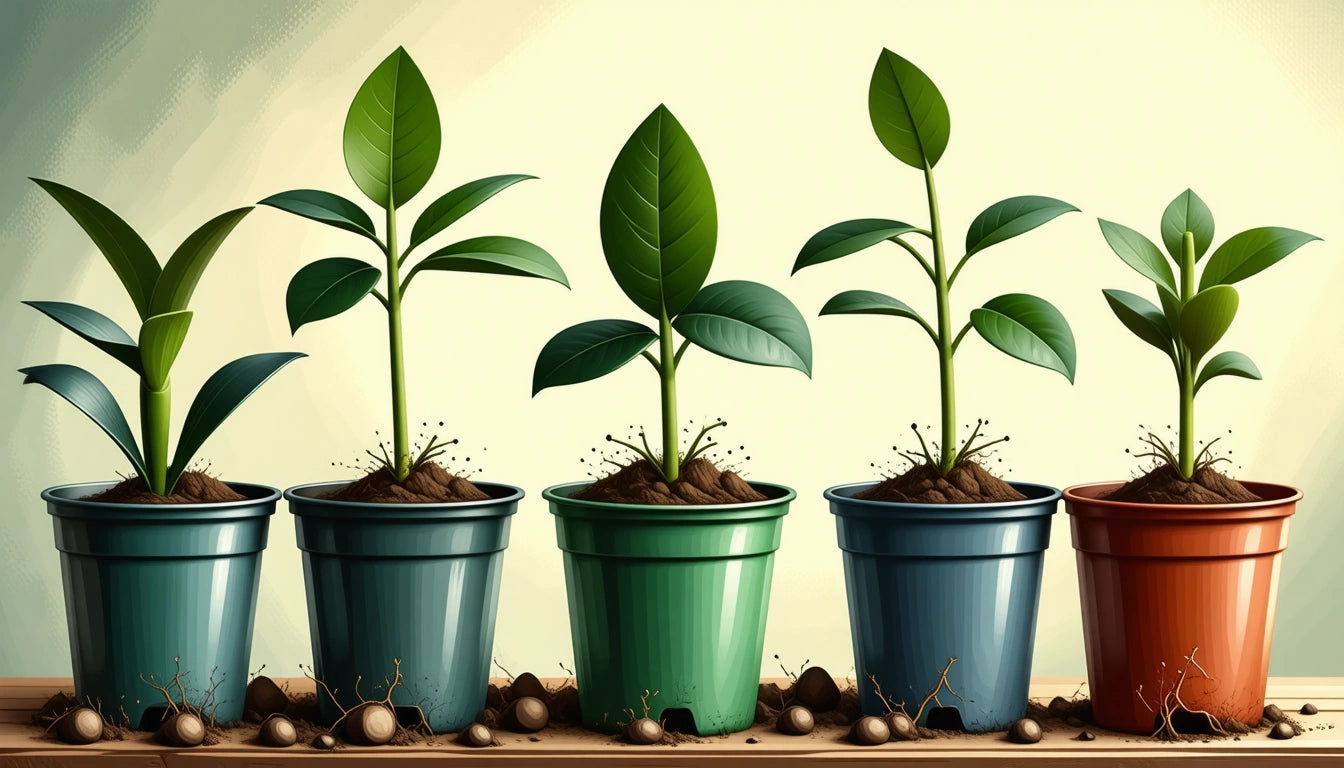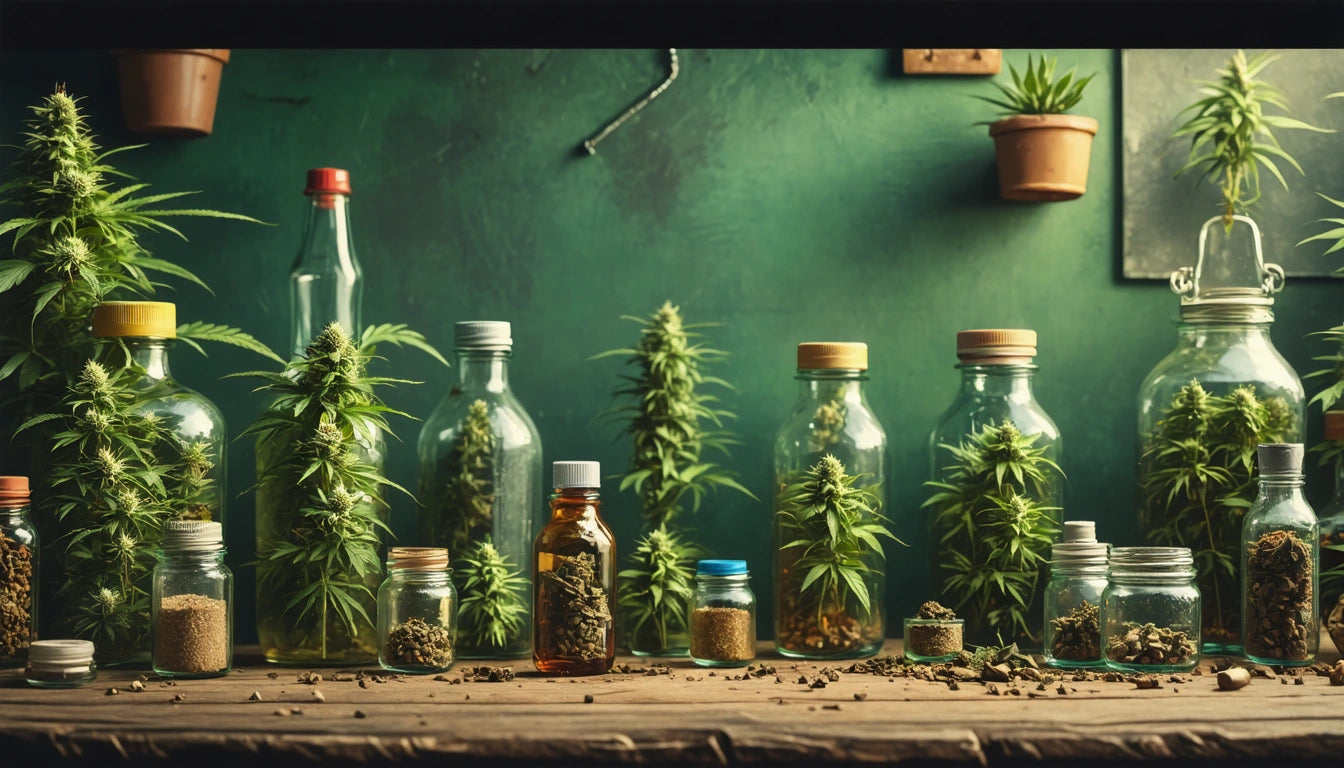Table of Contents
Understanding How Long Transplant Shock Lasts in Plants
Transplanting is a critical process in plant cultivation that can temporarily halt growth and cause visible stress. Whether you're working with cannabis seedlings or mature garden plants, understanding how long transplant shock lasts and how to minimize its effects is essential for successful cultivation. This guide explores recovery timelines, feeding schedules, and proven techniques to help your plants bounce back quickly.
What Is Transplant Shock: Signs and Symptoms
Transplant shock occurs when plants experience stress after being moved from one growing medium to another. The disruption to the root system and growing environment triggers a survival response that manifests in several ways:
- Wilting or drooping leaves despite adequate moisture
- Yellowing or browning of leaf edges
- Stunted growth or complete growth cessation
- Leaf drop or curling
- Reduced flowering or fruiting
These symptoms appear because the plant redirects energy from growth to root recovery and adaptation to new conditions. The severity of these symptoms often indicates how long the recovery period will last.
How Long Does Transplant Shock Last: Influencing Factors
The duration of transplant shock varies significantly based on several key factors:
Plant Type and Age
Young seedlings typically recover faster than mature plants, often bouncing back within 1-2 weeks. According to this comprehensive guide on transplanting seedlings, cannabis seedlings specifically may show signs of recovery in as little as 3-5 days under optimal conditions.
Root Damage Extent
The more extensive the root disturbance during transplanting, the longer recovery takes. Plants with minimal root disruption might recover within days, while those with significant damage could take 2-4 weeks or longer.
Environmental Conditions
Temperature, humidity, and light intensity dramatically affect recovery time. Ideal conditions can accelerate recovery, while harsh environments extend the shock period. For cannabis growers who need to monitor environmental conditions precisely, accurate measurement tools can help maintain optimal growing parameters during this critical period.
Transplant Recovery Timeline by Plant Type
Cannabis Plants
Cannabis is relatively resilient but sensitive to root disturbance. Based on expert guidance on cannabis transplanting, the typical recovery timeline is:
- Days 1-3: Visible wilting and stress response
- Days 4-7: Stabilization begins, minor new growth may appear
- Days 8-14: Return to normal growth patterns
- Days 15-21: Full recovery and accelerated growth
Vegetable Seedlings
Most vegetable seedlings recover from transplant shock within 1-2 weeks, with hardier varieties like tomatoes and peppers bouncing back faster than delicate greens.
Perennials and Shrubs
Larger woody plants and perennials may take 4-8 weeks to fully recover, with visible growth resuming after 2-3 weeks but full establishment taking a full season.
Minimizing Transplant Shock: Prevention Techniques
Reducing the severity and duration of transplant shock starts with proper preparation:
Pre-Transplant Conditioning
Hardening off plants by gradually exposing them to new environmental conditions reduces shock. For cannabis cultivators, timing transplants optimally can significantly reduce recovery time.
Transplanting Technique
Gentle handling of the root ball, transplanting on overcast days or during cooler hours, and maintaining as much of the original soil around roots as possible all contribute to faster recovery.
How Long to Wait to Feed After Transplant
Knowing when to resume feeding after transplanting is crucial for minimizing stress while supporting recovery:
Initial Waiting Period
Most plants benefit from a 5-7 day feeding pause after transplanting. This allows roots to recover from physical disturbance before processing nutrients. Premature feeding can burn damaged roots and extend recovery time.
Gradual Reintroduction
When reintroducing nutrients, start with 25-50% strength of your regular feeding schedule, gradually increasing to full strength over 2-3 weeks. This approach mirrors how clones establish their root systems and begin nutrient uptake.
Signs Plants Are Ready for Feeding
Look for these indicators that plants are ready to resume feeding:
- New growth appearing
- Leaves regaining turgidity (firmness)
- Root growth visible at drainage holes
- Overall plant appearance improving
Accelerating Recovery: Advanced Care Strategies
For growers looking to minimize how long transplant shock lasts in plants, these advanced techniques can help:
Root Stimulators and Hormones
Products containing mycorrhizae, beneficial bacteria, and rooting hormones can significantly reduce recovery time by promoting rapid root development and improving nutrient uptake efficiency.
Environmental Optimization
Maintaining slightly higher humidity (60-70%) and moderate temperatures (70-75 °F/21-24 °C) creates ideal recovery conditions. Reducing light intensity to 70-80% of normal levels for the first week reduces transpiration stress while roots recover.
Monitoring and Adaptation
Regular observation allows for responsive care adjustments. Track recovery progress and adjust watering, humidity, and feeding based on plant response rather than rigid schedules.
Understanding transplant shock duration empowers growers to set realistic expectations and provide appropriate care during this critical transition. By recognizing that most plants require 1-4 weeks for complete recovery and following the outlined care strategies, you can minimize stress and support your plants through successful transplanting with minimal growth interruption.











Leave a comment
All comments are moderated before being published.
This site is protected by hCaptcha and the hCaptcha Privacy Policy and Terms of Service apply.